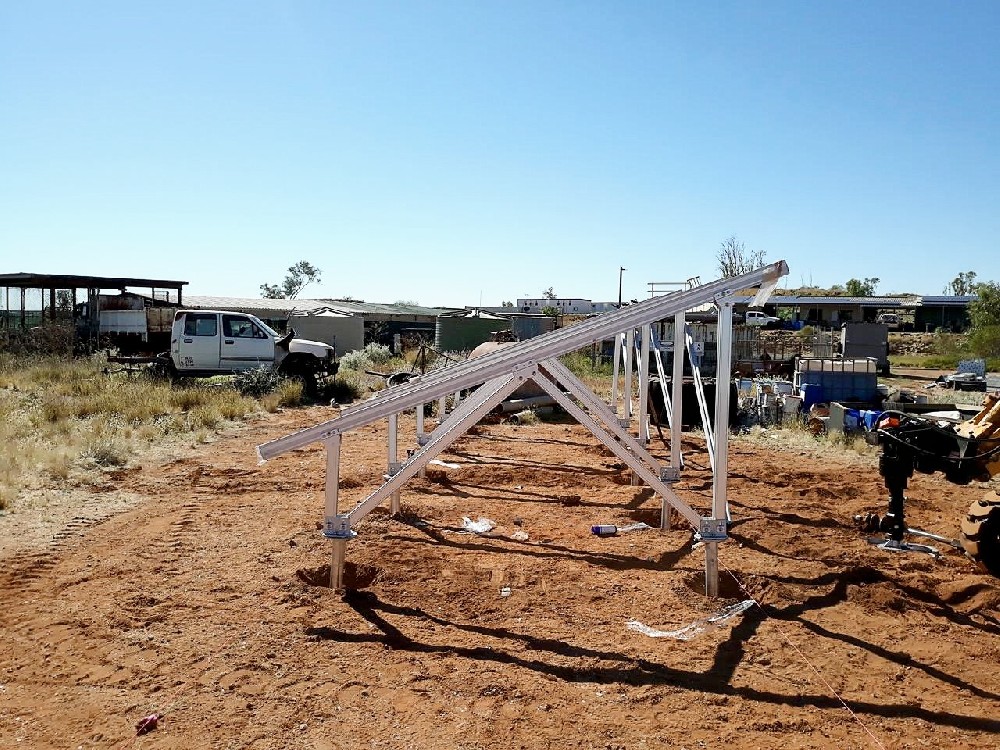
Do you know how many types of PV system foundations there are?
2023-12-19
PV system foundations type
There are several types of PV array foundations such as concrete pre-built foundation, concrete counterweight block foundation, spiral ground pile foundation, direct buried foundation, concrete prefabricated pile foundation and ground anchor foundation, as shown in Figure below.
1.Concrete pre-built foundations
The advantages of pre-built concrete foundations are their wide range of application, reliable forces, no special machinery required for construction, etc. The disadvantages are the large amount of earth excavation and backfilling works, long construction cycles, damage to the surrounding environment and the large amount of waste and construction debris that will be left in the land in the future.
2.Concrete counterweight block foundations
Concrete counterweight block foundations are often used in conjunction with pre-built foundations in the construction or renovation of rooftop PV systems, which effectively avoid or reduce damage to structures such as roof flashings.
3.Helical ground pile foundation
Spiral ground pile foundation is an increasingly widely used form of PV support foundation in recent years.Ground screw piles are caused by hot-dip galvanised steel pipe with spiral blades, which can be large or small, continuous or intermittent, with continuous welding between the spiral blades and the steel pipe. The common spiral ground pile is shown in the picture, its length has 0.55m, 0.7m, 1.0m, 1.2m, 1.6m, 1.8m, 2.0m, 2.7m and other specifications, the diameter has 60mm, 65mm, 76mm, 89mm, 114mm, 168mm, 219mm and other specifications, the top has tube, flange, U-shaped fork, square cylinder, cylindrical and other shapes, which can be selected according to needs. The upper part of the foundation of the spiral pile is exposed to the ground and the height of the support can be adjusted according to the terrain, and it is connected to the support column by bolts.
Common spiral ground pile profiles
Helical ground piles are a new type of foundation construction method. The method does not require excavation of land and prefabricated concrete filling, but only requires special tools or special machinery to ram or drill directly into the ground. Compared with traditional concrete foundations, it is simple, convenient and quick to install, saving time, energy and materials, making the foundation installation time shorter and construction costs lower, and it can be moved and recycled at any time and anywhere, protecting the site vegetation to the maximum extent and no pollution to the land and environment. When the system is dismantled at the end of its life, the foundation can be quickly removed together, leaving no residue in the land and the site can be easily restored to its original state.
4.Directly buried foundations
Directly buried foundation piles have no squeezing effect on the surrounding soil and require high self-supporting soil, so whether to use direct buried foundation requires preliminary geological survey test, loose sandy soil layer and hard soil gravel, pebble soil layer are not suitable for direct buried foundation construction. Loose sandy soils are prone to collapse, while hard gravel and pebble soils can cause difficulties in opening holes.
5.Precast concrete pile foundations
Compared to helical ground piles, precast concrete pile foundations are easy to obtain larger structural resistance under the same geological conditions due to the relatively large bottom and side areas, and the cost is also slightly lower than that of helical pile foundations. It is only during the construction process that the top elevation of the pile is not easily controlled and requires higher construction techniques.
6.Ground-anchored foundations
The working principle of ground anchor foundation is similar to that of helical pile foundation and is more commonly used abroad. When the anchor is pressed or screwed into the soil, the blades will be folded upwards. After the anchor is in place, the anchor is gently lifted upwards or the anchor is rotated in the opposite direction, the folded blades will open horizontally and the anchor is firmly implanted in the soil. According to foreign construction experience, ground anchor foundations are the strongest and safest. However, the ground anchor and bracket connection parts need to be specially tailored and the cost is very high.
